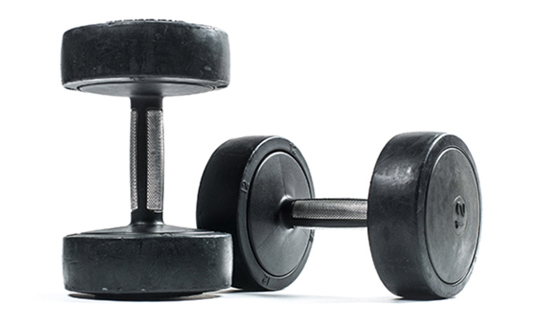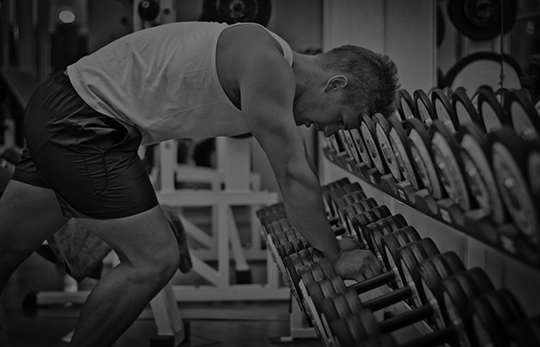





WARMING UP: EASY DOES IT
Before you perform your first set, you need to warm up. That’s because your muscles are like rubber bands. When you exercise, you put tension on those rubber bands. The tendons—the tissue that attaches the muscle to the bone—are not as elastic as muscle. Tendon is like a nylon rope.
If your tendons and muscles are warmed up, they become more elastic and forgiving of loads imposed upon them. That’s what we’re trying to accomplish with a warm-up, which is especially important on those cold days. The idea is to heat up the muscles, so they become less prone to injury.
So before the first set, take the first exercise on your list for that day, put on a much lighter weight than usual, pound through a set or two, and really wake those muscles up. You may even wish to warm up your body with five minutes of calisthenics or stationary bike exercise. Now you’re ready for the tough stuff.
LIFTING: STIMULATE, NOT ANNIHILATE
The first part of lifting a weight is choosing it. You don’t want something too light, otherwise you won’t have a prayer in reaching your growth threshold. Likewise, you don’t want something that will pin you to the floor of the gym.
The ideal is to select a weight you can lift about 10 times. And by the tenth time, it should be difficult to lift. Part of this is trial and error; you’ll have to experiment to see how much you can handle. But here’s the ideal lifting routine for each body part:
Each rep (that’s muscle-speak for “repetition”—one single exercise movement) should take you one or two seconds to lift, and then two or three seconds to return to the starting position.
The idea is to keep tension on the muscle at all times. Try to resist the urge to swing up and let momentum give you a hand. At the same time, don’t let gravity help you bring the weight down. A handy rule of thumb: pretend the weight is an infant. You wouldn’t swing or throw a baby, would you? (Then again, you wouldn’t bench press a baby, but let’s not get into that.)

RESTING: QUICK BREATHERS
Rest long enough in between sets of exercises to catch your breath before you begin your next set. In general, you should rest about one minute between sets of smaller body parts like arms and abs; large muscle groups like the legs may require two minutes or more. Don’t rest any longer than you have to, but let your body tell you when the oxygen debt has been cancelled and you’re ready for more. That’s when your breathing has normalized.
You might also pick up a simple stopwatch and set it for one minute. That way, you can train yourself to reach the ideal—one minute break between sets—before moving on to the next one. A chronograph with an alarm works just as well, too. These timers are especially handy if you meet someone in the gym who’s chatty. “Whoops! There goes my timer! I’d love to hear more about your company’s wild new spreadsheet program, but I need to be getting to my next set.”
The break between exercises, by the way, should be however long it takes you to set up the machine/weights for the next exercise. The break between body parts can be three to five minutes.
